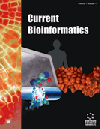- Home
- A-Z Publications
- Current Bioinformatics
- Previous Issues
- Volume 18, Issue 6, 2023
Current Bioinformatics - Volume 18, Issue 6, 2023
Volume 18, Issue 6, 2023
-
-
Biomarkers Identification of Hepatocellular Carcinoma Based on Multiomics Data Integration and Graph-embedded Deep Neural Network
More LessAuthors: Chaokun Yan, Mengyuan Li, Zhihao Suo, Jun Zhang, Jianlin Wang, Ge Zhang, Wenjuan Liang and Huimin LuoBackground: Hepatocellular carcinoma (HCC) is one of the malignancies with high mortality rate, and identify relevant biomarkers of HCC is helpful for early diagnosis and patient care. Though some high-dimensional omic data contains intrinsic biomedical information about HCC, how to integrate analysis them effectively and find promising biomarkers of HCC is still an important and difficult issue. Methods: We present a n Read More
-
-
-
Detection of Stage-wise Biomarkers in Lung Adenocarcinoma Using Multiplex Analysis
More LessAuthors: Athira K, Sunil Kumar P V, Manju M and Gopakumar GIntroduction: Lung cancer is the leading cancer in terms of morbidity and mortality rate. Its prevalence has been steadily increasing over the world in recent years. An integrated study is unavoidable to analyse the cascading interrelationships between molecular cell components at multiple levels resulting in hidden biological events in cancer. Methods: Multiplex network modeling is a unique methodology that could be used a Read More
-
-
-
Exploring the Hepatotoxicity of Drugs through Machine Learning and Network Toxicological Methods
More LessAuthors: Tiantian Tang, Xiaofeng Gan, Li Zhou, Kexue Pu, Hong Wang, Weina Dai, Bo Zhou, Lingyun Mo and Yonghong ZhangBackground: The prediction of the drug-induced liver injury (DILI) of chemicals is still a key issue of the adverse drug reactions (ADRs) that needs to be solved urgently in drug development. The development of a novel method with good predictive capability and strong mechanism interpretation is still a focus topic in exploring the DILI. Objective: With the help of systems biology and network analysis techniques, a class of descript Read More
-
-
-
Graph Convolutional Neural Network with Multi-Layer Attention Mechanism for Predicting Potential Microbe-Disease Associations
More LessAuthors: Lei Wang, Xiaoyu Yang, Linai Kuang, Zhen Zhang, Bin Zeng and Zhiping ChenBackground: Human microbial communities play an important role in some physiological process of human beings. Nevertheless, the identification of microbe-disease associations through biological experiments is costly and time-consuming. Hence, the development of calculation models is meaningful to infer latent associations between microbes and diseases. Aims: In this manuscript, we aim to design a computational mod Read More
-
-
-
piRSNP: A Database of piRNA- related SNPs and their Effects on Cancerrelated piRNA Functions
More LessAuthors: Yajun Liu, Aimin Li, Yingda Zhu, Xinchao Pang, Xinhong Hei, Guo Xie and Fang-Xiang WuBackground: PIWI-interacting RNAs (piRNAs) are a kind of small non-coding RNAs which interact with PIWI proteins and play a vital role in safeguarding genome. Single nucleotide polymorphisms (SNPs) are widely distributed variations which are associated with diseases and have rich information. Up to now, various studies have proved that SNPs on piRNA were related to diseases. Objective: In order to create a compr Read More
-
-
-
A Skin Cancer Detector Based on Transfer Learning and Feature Fusion
More LessAuthors: Hongguo Cai, Norriza Brinti Hussin, Huihong Lan and Hong LiBackground: With the rapid development of advanced artificial intelligence technologies which have been applied in varying types of applications, especially in the medical field. Cancer is one of the biggest problems in medical sciences. If cancer can be detected and treated early, the possibility of a cure will be greatly increased. Malignant skin cancer is one of the cancers with the highest mortality rate, which cannot b Read More
-
-
-
ADSVAE: An Adaptive Density-aware Spectral Clustering Method for Multi-omics Data Based on Variational Autoencoder
More LessAuthors: Jianping Zhao, Qi Guan, Chunhou Zheng and Qingqing CaoIntroduction: The discovery of tumor subtypes helps to explore tumor pathogenesis, determine the operability of clinical treatment, and improve patient survival. Clustering analysis is increasingly applied to multi-genomic data. However, due to the diversity and complexity of multi-omics data, developing a complete clustering algorithm for tumor molecular typing is still challenging. Methods: In this study, we present an adaptiv Read More
-
Volumes & issues
-
Volume 20 (2025)
-
Volume 19 (2024)
-
Volume 18 (2023)
-
Volume 17 (2022)
-
Volume 16 (2021)
-
Volume 15 (2020)
-
Volume 14 (2019)
-
Volume 13 (2018)
-
Volume 12 (2017)
-
Volume 11 (2016)
-
Volume 10 (2015)
-
Volume 9 (2014)
-
Volume 8 (2013)
-
Volume 7 (2012)
-
Volume 6 (2011)
-
Volume 5 (2010)
-
Volume 4 (2009)
-
Volume 3 (2008)
-
Volume 2 (2007)
-
Volume 1 (2006)
Most Read This Month
Article
content/journals/cbio
Journal
10
5
false
en


